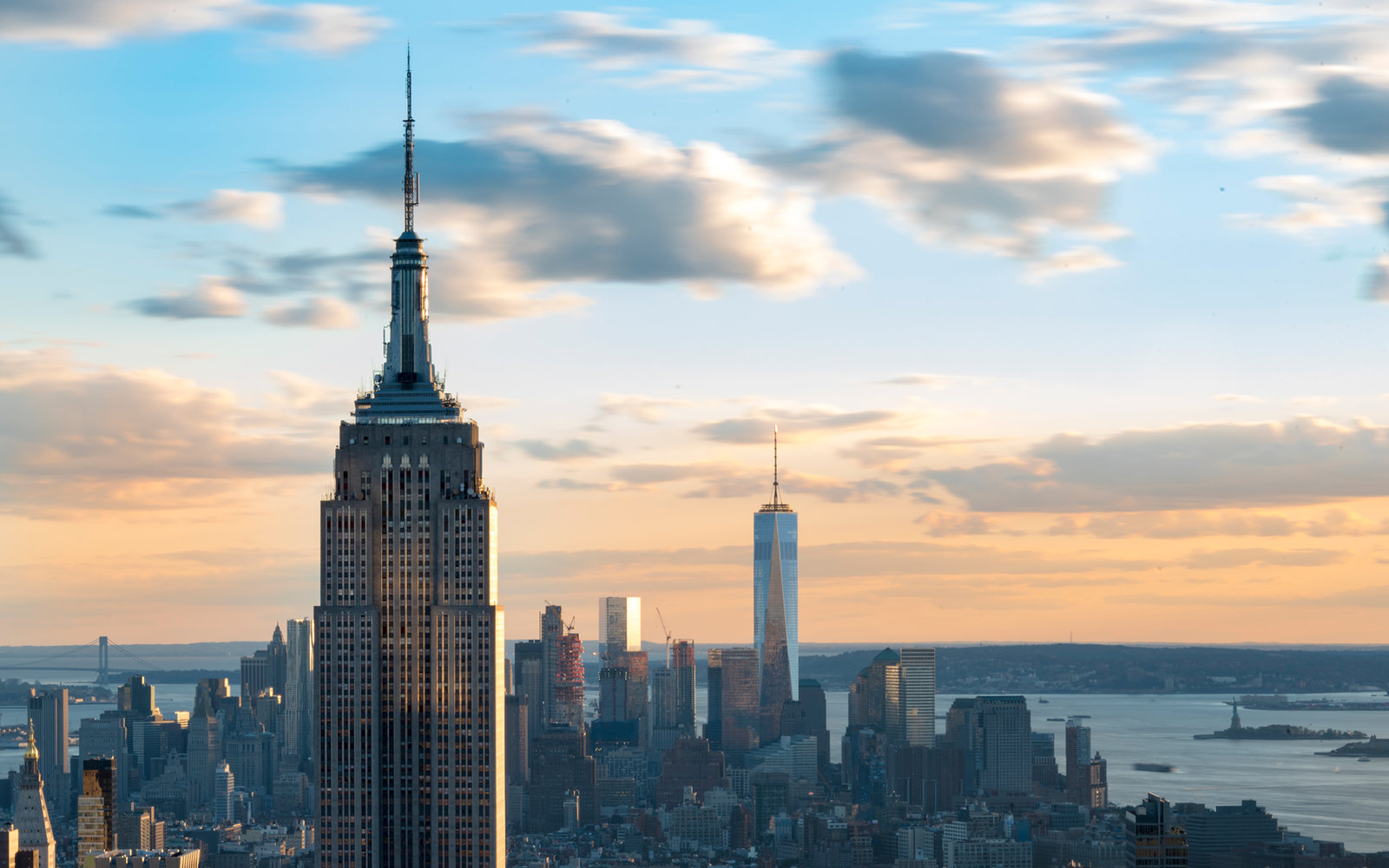
This iconic Art Deco landmark has defined New York City’s skyline since the 1930s. Here, nine little-known facts you might not know about one of the world’s most famous buildings.
The Great Depression cast a dark cloud over America during the late 1920s and '30s, but out of the shadows emerged symbols of hope and the promise of forward progress. In New York City, an architectural race to build the tallest building in the world was thrown into the national consciousness. At 1,046 feet, the Chrysler Building was the first to hold the crown when it was finished in May 1930. However, a mere 11 months later, the switch was flipped on at the 1,250-foot-tall Empire State Building, the tallest building anyone had ever seen. Known in its day as the “eighth wonder of the world,” this national landmark has been immortalized in cinematic hits like An Affair to Remember and King Kong and remains one of the world’s most recognizable structures made by man—though some facts about the behemoth may still surprise you.
Ever wonder why the building goes dark once the clock strikes midnight? (Hint: it’s not just to save on the electric bill.) Birds are drawn to city lights, which hinder their ability to see other skyscrapers looming around them. During two migration seasons, officials counted some 90,000 birds killed by collisions with New York City structures. Thanks to New York City Audubon, a handful of buildings, including the Empire State Building, now go dark at midnight during migration season to help birds pick a safe flight path.
Speaking of lights, for years, the ones illuminating the Empire State Building’s upper floors held a steady, white glow. However, now, a new LED system installed in 2012 has the ability to showcase an astounding 16 million color combinations that honor national events and holidays—red, white, and blue flourishes for Independence Day; a “beating heart” red for Valentine’s Day; split lights representing competing sports teams. Check the schedule for past and future lightings.
Despite taking up a single city block in Midtown Manhattan, the Empire State Building is, at 2,812,739 square feet, so massive that it earned itself its own zip code to better aid the postal service with deliveries. More than 40 other buildings in New York City also possess their own digits, including the World Trade Center, the MetLife Building, and Brookfield Place.
Couples hoping to tie the knot at the top of the world will have to settle for the most romantic day of the year. Weddings at the Empire State Building are held on one day and one day only—Valentine’s Day—and occur en masse at the 86th floor Observatory. (Talk about an exclusive club.)
After the 1,050-foot-tall building proper was completed, New York State Governor Al Smith came up with a highly ambitious plan to add a 200-foot spire, intended to serve as a type of mooring mast where airships would dock mid-flight. Of course, gusty winds at such a height prevented any chance of this actually happening; many suspect the spire was really an inspired idea to definitively surpass the 1,046-foot Chrysler Building, then the tallest building in world.
The venerable and luxurious Waldorf-Astoria hotel was an instant success when it first opened on Fifth Avenue in 1893, but its age hastened an inevitable demise once city developers bought the two-acre block in 1929 in order to build the Empire State Building. The Waldorf moved to its current digs above a former cemetery on Park Avenue (whose remains were transported to Ward’s Island), and became an Art Deco icon just like its replacement.
One foggy July morning in 1945, Lt. Col. William Franklin Smith Jr. was piloting a B-25 military bomber plane through New York City airspace when he was forced to fly low to regain visibility and crashed into the Empire State Building, ripping an 18-by-20-foot hole into the 78th floor. Fire after the fuel tanks exploded killed 14 people and injured another 26. It cost some $1 million to repair the structure.
Above the 102nd-floor “Top Deck” hides another tiny room, off-limits to the general public. Originally conceived as a disembarking level for moored airships, the 103rd floor, accessible via a narrow staircase from 102, remained a maintenance level for years before being opened to lucky invitees—mostly dignitaries and celebrities—who, once at the top, are treated to vertigo-inducing open-air views of Manhattan island.
America was buckling under the strains of the Great Depression when construction began in 1930. In record speed, the building was up in 1 year and 45 days and cost just shy of $41 million, less than half of its projected cost—an impossible feat by today’s standards. Despite the grand, impressive new address, the building remained nearly 80 percent vacant for a time after its official opening because businesses hit by the times could not afford the rent.